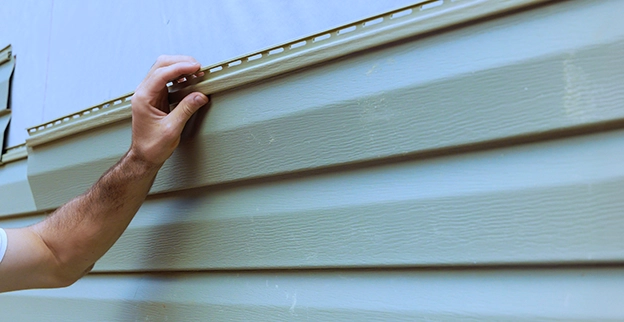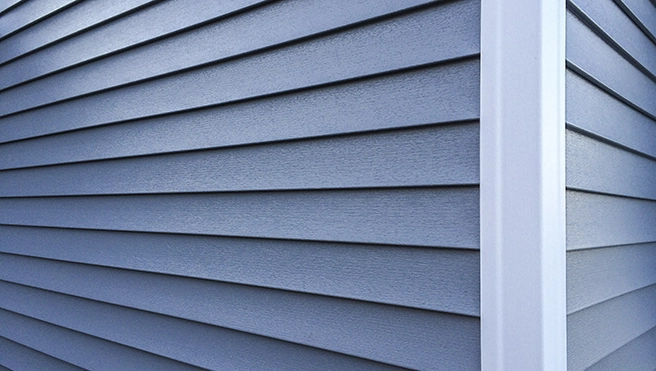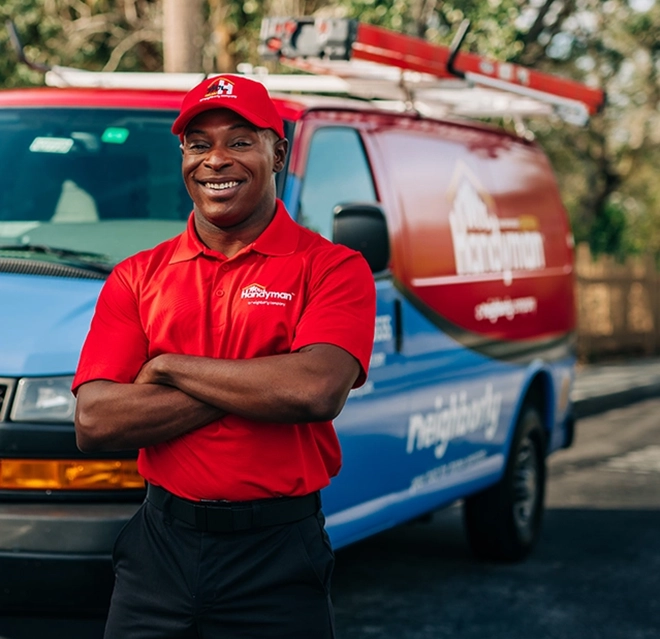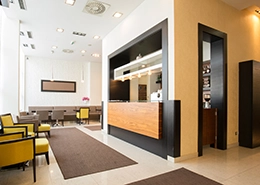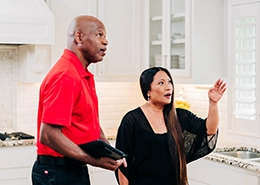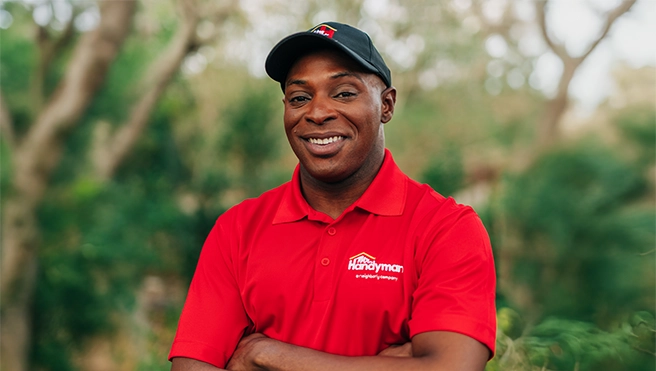Type Of Siding Materials
There is a diverse palette of siding material options to opt for. Our expert handyman can customize a solution for you based on your personal preferences, budget, and the durability of the material. Here are just some of the options to go for:
Natural Wood: Natural wood, including cedar shingles and clapboard, has more of a rustic appeal, perfect for a cabin in the mountain woods, and natural wood siding is made of redwood or cedar. It’s easy to paint or stain, easy to repair, and is the most eco-conscious material there, helping you to reduce your eco-footprint as it's biodegradable. Just keep in mind that it offers no insulation, is highly flammable, and needs more costly maintenance via extra coats of paint due to wood being susceptible to moisture damage. If you overlook this, you will find it falls into disrepair with faded color, chipping, peeling, and cracking and will, of course, become a smorgasbord for an insect infestation.
Engineered Wood: Engineered wood, including all-wood exterior-grade plywood, is a wood-based product that is treated with adhesive resins to forge a more robust and durable material compared to natural wood. Plus, the extra layer of waxy adhesive serves as a water-repellent resistance to wood rot decay and humidity and so will not rot, crack or split. It gives you the best of both worlds of natural wood appeal without the hassle of upkeep and lesser maintenance and cleaning. Although similar to natural wood, it may be an upgrade, but it's not impervious to consistent water and moisture damage, including warping, mold and mildew, and pest invasions, so you’re sure to do maintenance.
Composite Wood Siding: Another wood-based product, composite wood siding, is made of natural wood pieces in combination with additional substances similar to engineered wood. Composite siding is slightly more durable, more lightweight, and easy to install whilst retaining the authentic attractiveness of pure wood and can last you up to 30 years. Plus, it’s waterproof and so doesn’t expand, constrict or even rot once exposed to moisture. One thing you have to be aware of, however, is that a bad installation job can result in improper insulation for your home. Also, please note that this is not the real deal of being purely wood, so its texture will be more brittle to the touch. It’s also more expensive to install.
Vinyl (PVC): Vinyl is durable, inexpensive, a good insulator, and mostly maintenance-free as a plastic material. It's great if you’re looking for something entry-level. Although it doesn’t last as long as its counterparts, up to approximately 15 years, it's still prone to moisture damage and can crack and warp easily if exposed to fluctuating temperatures and heavy pressure. So you may not exactly be saving the big bucks plus, vinyl is not environmentally friendly.
Fiber Cement Siding: Made of cement upheld by cellulose fibers, fiber cement is incredibly durable and sturdy, fire-resistant, and can withstand fluctuating temperatures alongside preventing damage from an invasive perception from wind, rain, and hail plus, it won’t easily warp, rot, or be nibbled on by bugs. It can also last you up to 50 years! It is, however, more expensive than its counterparts, is difficult to install, and is moisture-absorbent. Plus, it doesn’t win points for being eco-friendly, nor is it energy efficient.
Solid Brick Siding: Old-fashioned and traditional using bricks for siding was commonplace until the mid-1950s when double layers of brick were used to provide basic insulation for a house. Similar to wood, it's made from natural materials, so it’s environmentally friendly given that it's recyclable, has a longer lifespan, and is mostly low maintenance. But there’s a reason why it’s not exactly a popular trend in our modern world. It's a poor insulator and allows moisture to readily seep through, so don’t be surprised to see your home flooded after heavy rainfall. It doesn’t help the fact that repairs are cumbersome and difficult to do too.
Brick Veneer: The new and improved of just plain old brick, brick veneer is upheld by concrete, steel, or wood that serves as a support mechanism and backup whilst the brick pieces themselves are rather a showpiece and for aesthetic purposes only. Although generic brick is more old school, brick veneer is more lightweight, more inexpensive, has better insulation ability, is more energy efficient, and still mimics the appearance of natural brick while retaining its useful quality, like being fire-resistant.
Natural Stone: As natural as it gets, stone is durable, long-lasting, insulating, and can withstand fluctuating temperatures because it is a fire-resistant material. It also readily boosts the curb appeal of your home, adding a pleasant beauty, unlike any other siding material. Being a more sustainable option for building materials, you also reduce your ecological footprint, and you can recycle the material. It is, however, more expensive to install, can crack under heavy pressure, and if you take into consideration the mining process for the stones, it may cause damage to the environment.
Stone Veneer Siding: The more improved version of purely natural and organic stone, stone veneer is a stone-based material that is composed of not just natural stone but polymers that strengthen the material and allow it to be more waterproof. Stone veneer siding is slightly more featherweight, durable, long-lasting, and, of course, fire-resistant and doesn’t lose its authentic visual appearance in any way whatsoever. It’s also more affordable than natural stone as the veneer itself is more budget-friendly than the collection of real stones themselves. But it has its downsides, too, if the stone veneer is not installed properly and exposed to moisture, water can get trapped underneath the veneer backing, resulting in damage. Plus, insufficient sealant can result in drafty windows, doors, and vents.
Aluminum Siding and Other Metals: Aluminum is a durable metal that performs well in fluctuating temperatures, including excessive moisture. It is also a proficient insulator that provides boosted energy efficiency, readily reducing heating and cooling costs. However, aluminum is more expensive to install than wood or vinyl and is prone to physical damage, such as scratches, dents, and holes, if it gets rusted due to corrosion. It can also cause noise pollution when exposed to searing winds.
Stucco: This is a cement-based mixture made of Portland cement, lime, sand, and water and, similar to its veneer counterparts, contains polymers and other added substances to strengthen the material itself and make it more flexible against harsh local weather conditions. And so, stucco is one of the most resilient materials, it is fire-resistant, not to mention aesthetically appealing. The only thing to be mindful of is that stucco is more moisture absorbent, so don’t be surprised to see damp patches on your siding due to mold growth, its texture is more brittle, so if your house’s foundation were to shift and settle it can result in unsightly hairline cracks and fractures. So, we wouldn’t recommend stucco in areas with high clay content in the soil, which is known to swell and persuade house foundations to shift.
